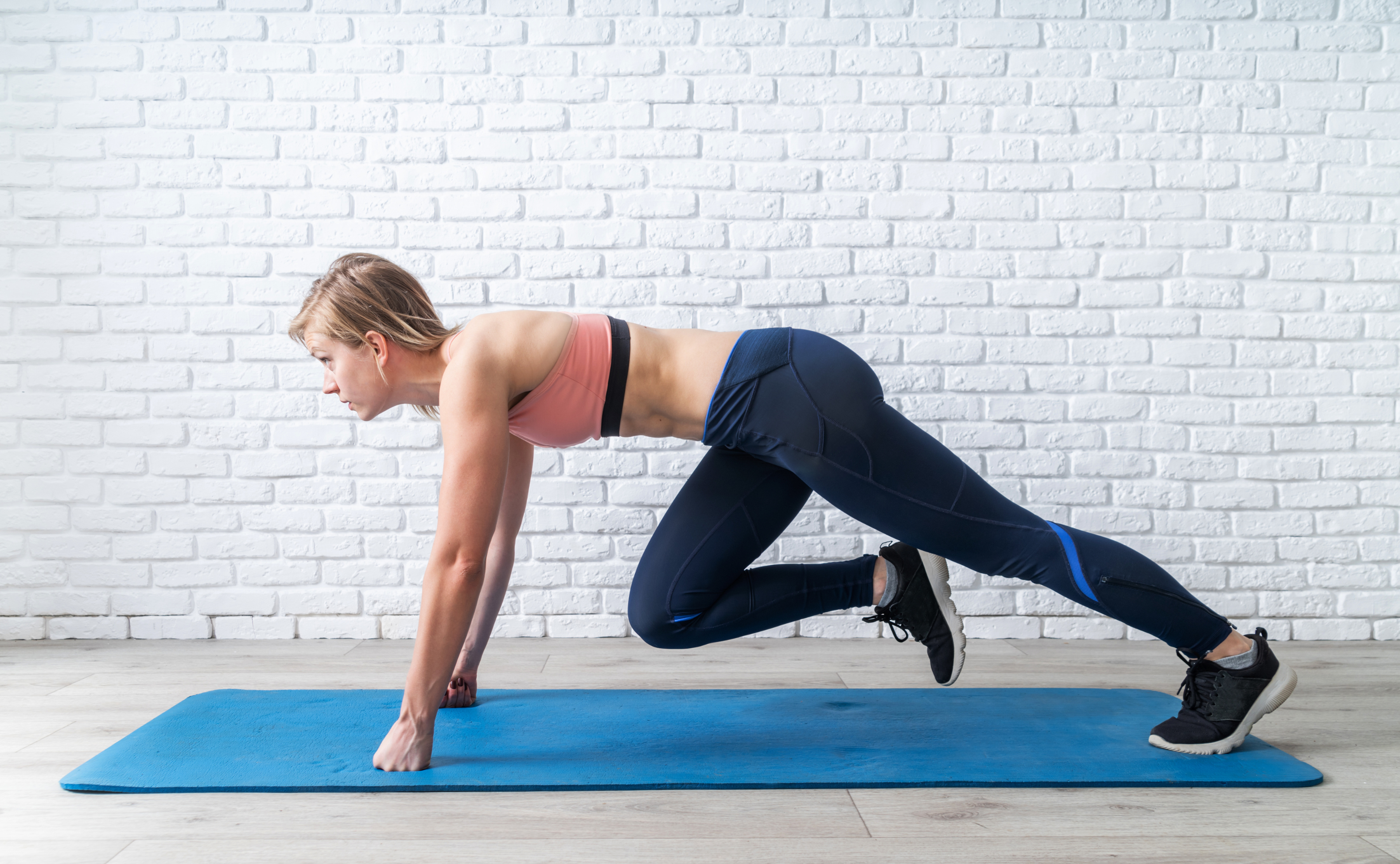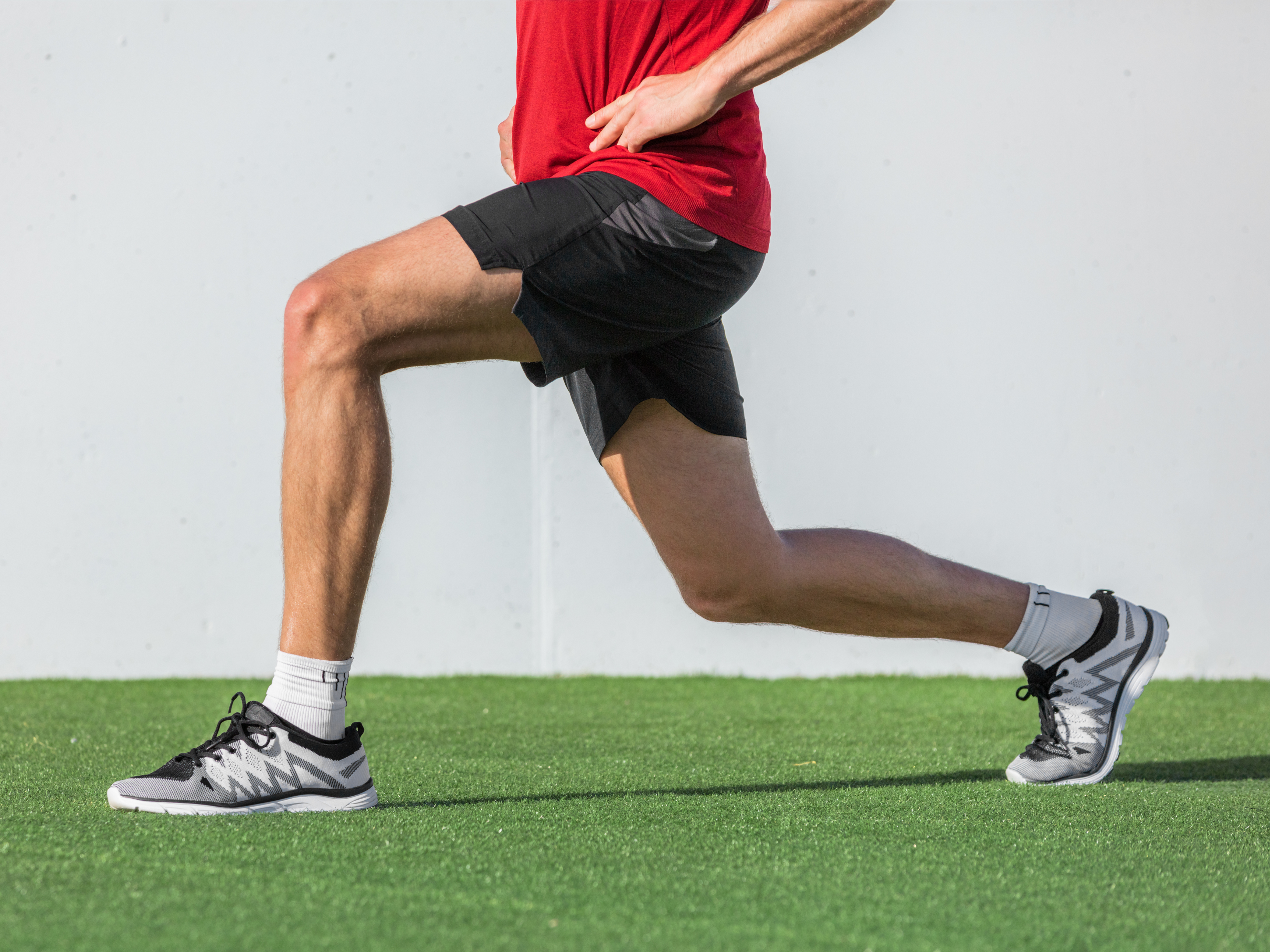Core strength for runners: Beginner to advanced exercise progressions
Core strength and stability refer to how well the muscles around your trunk and hips control your movements.
There's evidence that good core strength and control can help prevent injuries and improve performance. Recreational athletes appear to benefit more from core strength workouts than elites.
Do core exercises have to be functional?
Yes and no. It depends on your definition of "functional".
If you define a functional exercise as one that "looks" similar to the running action, then the answer is no — core exercises don't necessarily have to look like you're running.
We define functional exercises as exercises that work your muscles in a similar way to running.
In other words, the exercise might not look like running, but it exerts a similar force on your body that your core muscles must control.
Combining a plank with leg lifts is an excellent example of this. It creates strong diagonal forces through your pelvis, which resembles what happens when you run. It might not look like running, but it's a brilliant exercise to ensure your abdominal, hip flexor, and adductor muscles work as a team, helping you prevent injuries like osteitis pubis and adductor tendonitis.
But this version of the plank is quite advanced — to get to a point where you can safely do them, you have to nail the simpler versions first. Usually, it's best to start with exercises that help you gain basic strength and control before moving on to more "functional" ones.
Core exercises for runners (beginner to advanced)
We chose these 3 core exercises because they target all the important muscles, and you can easily progress them to a point where they resemble the forces and actions we use in running.
We've split the core workouts into 5 levels in the Exakt Health app to ensure you master them properly and progress safely. Here are examples of where you might start if you're a beginner and what you might build up to in the more advanced levels.
Researchers recently found that novice runners can reduce their risk of overuse injuries by 39% by following a similar strength training plan.
1 - Front plank progressions
Benefits:
- Front planks strengthen your upper body, abdominal, back, hip flexor, and hip adductor (the front parts) muscles.
- With the more advanced versions, you can create strong diagonal forces through your trunk and pelvis, similar to those in running.
2 - Side plank progressions
Benefits:
- The simpler versions mainly strengthen your upper body, side trunk, and gluteal muscles.
- The straight-leg versions also work the adductor (top leg pressing down) and peroneal (bottom leg) muscles.
- The advanced versions using resistance bands challenge you further by creating strong diagonal forces through the trunk and pelvis.
3 - Bridge progressions
Benefits:
- Bridges strengthen your back, abdominal, gluteal, hamstring, and adductor (the back portion) muscles.
- By adjusting your position, you can work certain areas harder than others — you can even create versions that work the hip flexors.
- The bridge exercise can be adapted in more ways than any other type of exercise. You can place your feet on different surfaces (floor, bench, ball), have them close to your bottom or far out, be on double leg support or single, oradd weights or resistance bands.
Check out the core workouts in the Exakt Health app if you want more guidance. All the exercises have clear video and text instructions, and the App uses your feedback after workouts to progress your exercises at the correct time.
How often should runners do core?
Twice a week is usually enough, but you could do up to 3 times if you're very motivated.
Leave at least 48 hours of recovery time between your core workouts.
You can find more tips on balancing your strength training and running schedule here.
You'll still gain strength if you only train your core once a week, but your progress will be slower.
Does running strengthen your core?
Yes, your core muscles work when you run; the faster you run, the harder they work.
The natural next question leading on from that answer is "Well, can't I then just run and ignore core training?"
Yes, many runners manage to run strong and injury-free without doing any core exercises. However, there are also just as many runners who get injured because they lack core strength.
So far, research in this area is lacking. I believe that genetics might be the key deciding factor.
In my experience, some runners build muscle much more easily than others and have better passive support systems (less flexible ligaments). It's the runners with more flexible ligaments and less muscle who tend to run into trouble if they don't incorporate core workouts.
The Exakt Health app allows you to pick and choose from different workouts to create a schedule that best suits your body.


